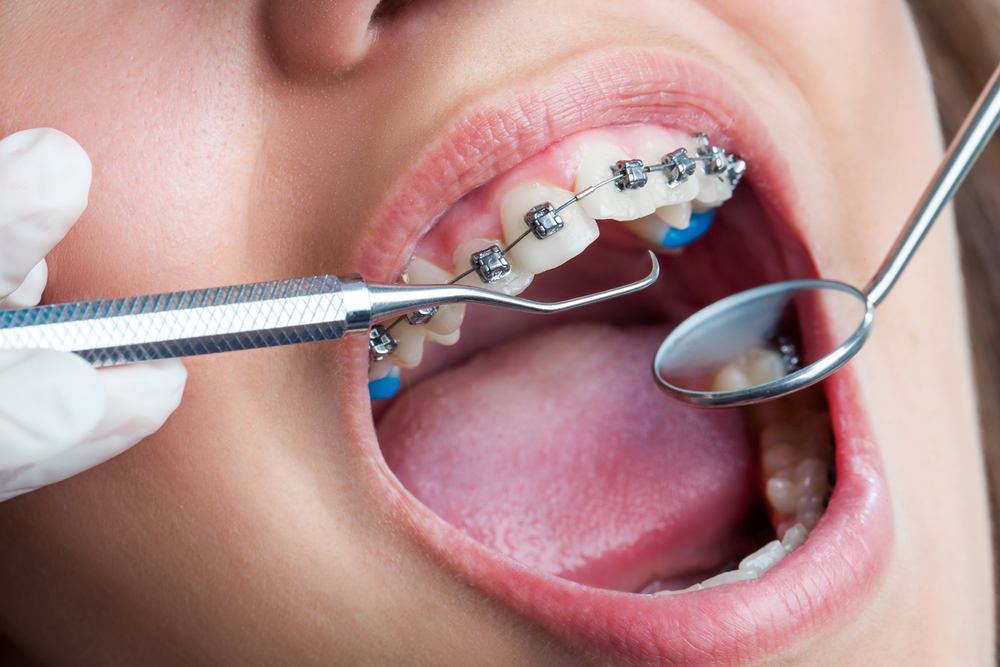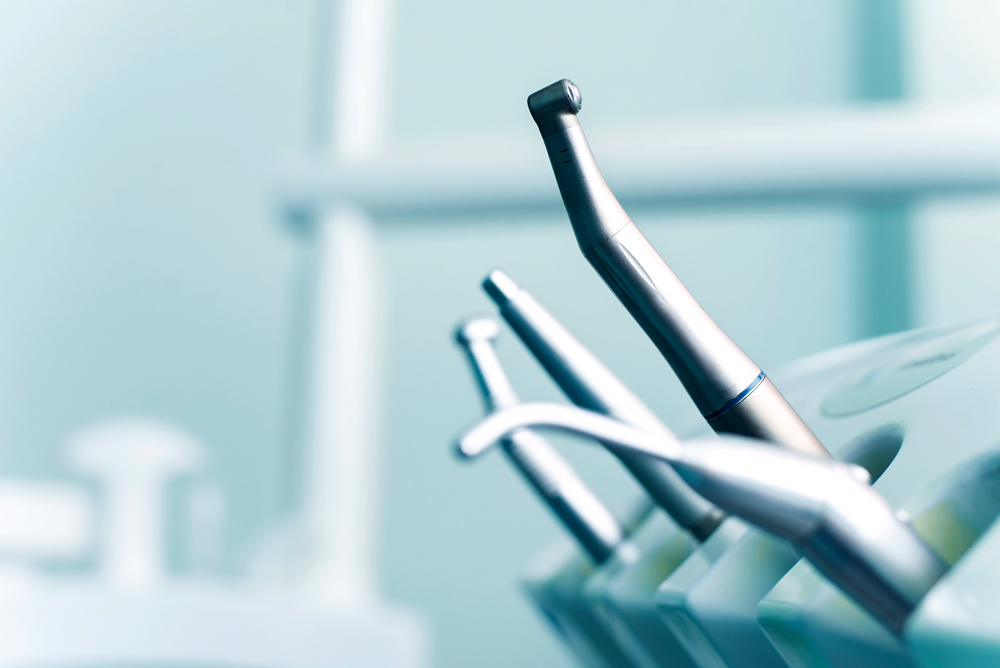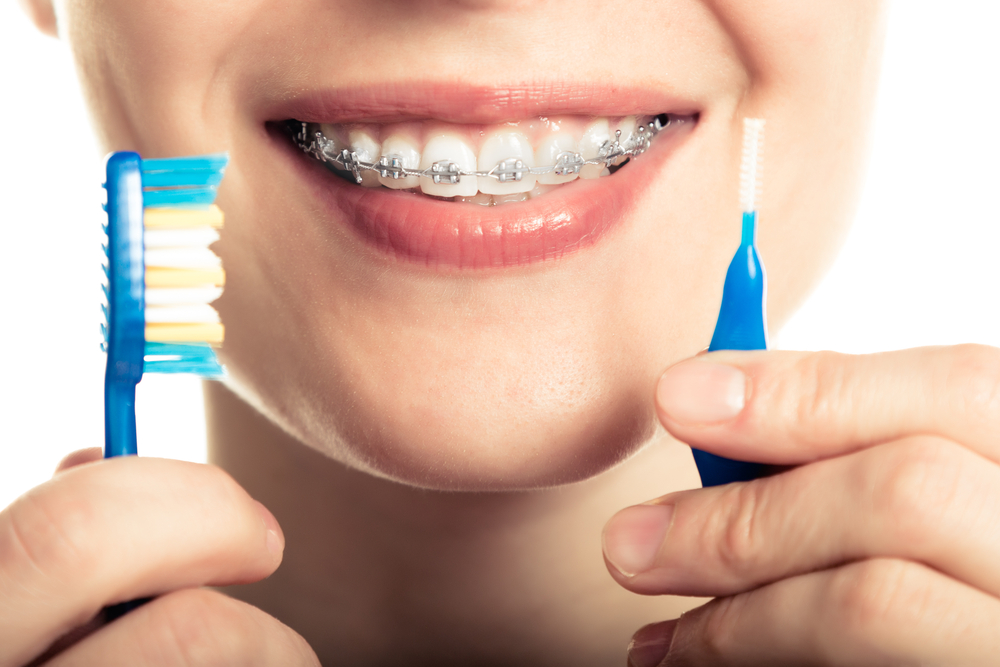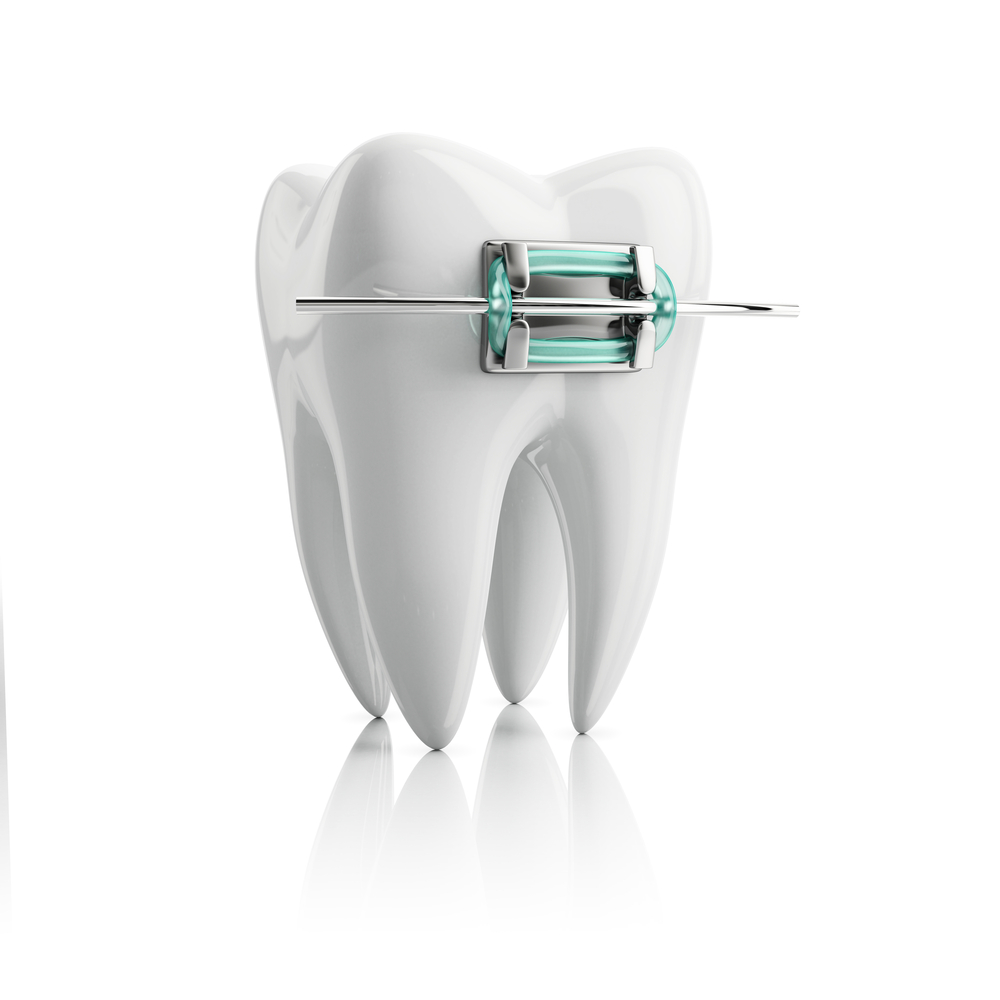Surgical Orthodontics and Other Straightening Options

Traditional braces, lingual braces, Invisalign and more. These are some of the services we offer our patients at Belmar Orthodontics. But, have you ever heard of surgical orthodontics? This is a practice that not only deals with the straightening of the teeth, but deals with correcting jaw abnormalities and problems with bite. Surgical orthodontics is most often used to correct these problems and for cosmetic/aesthetic reasons in older adolescents and adults. Dr. Hardy is highly skilled to prep you for corrective jaw surgery and help you recover. Learn more about surgical orthodontic care and our other straightening options today!
Investing in Orthodontic Care Early
Did you know that the American Association of Orthodontics recommends that children have their first orthodontic visit between 7 and 8 years old? Many people may think that’s a young age, but it’s for a very important reason. Giving your child an early oral examination can help detect orthodontic issues that are present and prevent their progression. A child’s jaw is continually forming all the way until they are about 18 (for boys) and 16 (for girls). During this time, if a bite problem manifests itself, it can easily be corrected with early orthodontic care. What bite problems might we be talking about?
- Underbite – The lower jaw juts out more than the upper, which prevents proper function of the mouth and can lead to TMJ.
- Crossbite – Teeth overlap unevenly over one another (some in front of and some behind the lower teeth). This can cause bite problems, wear and tear, tooth breakage and more.
- Openbite – There is an inadequate overlap of the front teeth. The front teeth may not touch the lower ones at all. This is caused by tongue thrust, thumb-sucking, or from the jaw not growing evenly. It can cause major dysfunctional chewing patterns and wear to the back teeth of the mouth.
- Overbite – The upper jaw extends out over the lower one instead of lining up straight. This can cause your teeth to bite into your gum tissue and will cause wear to the lower front teeth.
- Impacted Teeth – A tooth that has not erupted correctly in the mouth. Wisdom teeth are the most common form of impaction. Canines and premolars can also become impacted though.
Corrective Jaw Surgery
If you are like many others, you may not know too much about surgical orthodontics (a.k.a. corrective jaw surgery) and just how life-changing it can be for many patients. If you have a bite problem present (such as the examples we mentioned above), you may experience trouble chewing, biting, breathing, speaking and performing basic functions with your mouth. Corrective surgery can fix your bite problem and restore correct function to your mouth if bite-correction orthodontic care was not utilized as a child. This surgery can only be done on older patients after the jaw has finished forming in later adolescence (16-18 years old).
Pre-Surgical Phase
We see patients that come into our office with aesthetic concerns about their profile or jaw shape and size. For bite or aesthetic reasons, we will meet with you to start a pre-surgical phase to align your teeth through orthodontic care so that they are in an ideal position for surgery. Your options for straightening the teeth include:
- Traditional Metal Braces – The metal brackets we know and love. This is your cheapest option for straightening and one of the most effective.
- Ceramic Braces – Want the structure of traditional braces without them being so noticeable? Our ceramic braces are naturally white already, which blend in with the teeth. We can make the wire white as well.
- Lingual Braces – These are metal braces custom-made and attached to the back of your teeth instead of the front. These can achieve the same effect as metal braces without being detectable.
- Invisalign – A system of transparent, removable aligners custom-made to fit your mouth. You will receive new aligners every few weeks that will gently mold your teeth into proper alignment. The aligners are clear and straightening can be done discreetly.
Post-Surgical Phase
We then work closely with an oral surgeon who will perform your actual corrective jaw surgery. For the upper jaw, the surgery generally involves shifting the jaw backward, forward, upward or downward for proper alignment. For the lower jaw, the oral surgeon can move your jaw forward or backward. We are with you for the months of the pre-surgical phase and stay with you for the rest of the post-surgical phase as you heal. Surgical orthodontics is a complicated process. You will need some pre-surgery orthodontic straightening as well as post-surgical straightening as well that lasts between 6-12 months. With how fast time passes though, it’s worth the time it takes to be able to breathe, chew, bite and speak properly again.
At Belmar Orthodontics, we take special care to provide you effective treatments for you that will change your life forever. Surgical orthodontics can literally change your life if you have any bite or aesthetic problem that ails you. For more about orthodontic surgery, call our Belmar Orthodontics office today at (303) 225-9016 for your free consultation!
Straightening through Temporary Anchorage Devices

What are temporary anchorage devices and what can they do for you? Not all of our patients receive TADs for their teeth, but the ones that do greatly benefit from their straightening power. TADS are small titanium screws we use to help our our patients move their teeth. We place the screw in the gum and jaw bone and it acts as an anchor point for the teeth. We specialize in many methods of teeth straightening such as traditional braces, Invisalign, lingual braces and more, but also employ the use of TADs as needed to give our patients an exceptional smile. They can even aid in creating quicker tooth movement in our patients to achieve the desired straightening effect that is needed. Learn more about all of our straightening methods and which one is right for you. If you need TADs, you can trust in our expertise and finesse with giving you a straightening experience you will enjoy at Belmar Orthodontics.
The Advancement of Orthodontics
Orthodontics has come a long way from the crude methods of straightening practiced centuries ago. Extensive headgear and wires were used to straighten the teeth in the past. We benefit today from advanced technology that allows us many options when it comes to straightening the teeth, even discrete options. Temporary anchorage devices (TADs) are one of the methods we employ at Belmar Orthodontics when it’s in the best interest of the patient. Temporary anchorage devices work with braces to get your teeth straighter, faster. How do they work though?
Tidbits About Temporary Anchorage Devices
Temporary anchorage devices help shift the teeth into a straighter position when braces can’t do the job on their own. Braces are usually sufficient for most patients, but we want all of our patients to benefit from amazing, straight smiles and because of this we use TADs to get them all the way there. TADs consist of small, titanium mini-screws called “mini-implants” or “micro-implants”. These implants are fixed objects that braces use to push, pull, lift or intrude teeth while straightening. Just think of them as anchor points that are amazing tools for braces to get your teeth straighter. Once inserted, TADs do not move, but Dr. Hardy is able to use them to move the teeth in directions and distances that were not previously possible.
How Do They Work?
Temporary anchorage devices are installed quite easy, much like other orthodontic options. You have to be a good candidate for TADs to receive them. This means free of gum disease and you need a strong jaw. Your gum tissue and jaw area will be numbed much like they are numbed at a dental office before a procedure. Then Dr. Hardy will insert the tiny metal screws in areas that will help your teeth to move the most. The insertion process will be completely painless. Adjustment to TADs might take a day or two. The adjustment process should be no different than adjusting to metal braces. Adjusting to any type of straightening device takes time. We will remove the TADs once your teeth have moved into proper place. It’s literally that easy.
Traditional Straightening Options
We have many options for straightening instead of solely relying on traditional metal braces. We’ll still include metal braces on our list though:
- Traditional Braces – These are the standard metal braces that we all know and love. The great thing about “traditional” braces is that they are traditional for a reason. They are strong and highly effective with moving the teeth. Most of our patients get to dress up their brackets with a variety of colors at each visit too. This is usually the most cost-effective option when it comes to straightening the teeth.
- Ceramic Braces – These are basically your traditional metal braces, except for the fact that they can be made white to match the color of your teeth. The wires and brackets are both made white so they are virtually unnoticeable in your mouth. Ceramic braces are made of ceramic material. Ceramic is harder to stain and easier to clean than metal.
Discreet Straightening Options
Want a straight smile without others knowing? Try lingual braces or Invisalign!
- Lingual Braces – Take a step up from traditional and ceramic braces with lingual braces. These braces are called “incognito” braces because they do just that—go incognito! We customize lingual braces to the shape of your teeth. We then attach them behind the teeth instead of in front. You’ll receive all the strength and functionality of metal braces without the visibility.
- Invisalign – Invisalign is perhaps the most discreet form of teeth straightening. These transparent, removable aligners are perfect for teens and adults who want a straighter smile and don’t have bite problems. You will receive customizable aligners that change every few weeks so that the teeth are constantly falling into a straighter position. Oral care is easier, you can remove them at your leisure, and you will come out in the end with a straight smile—which is what we all want!
If you ever need to have TADs, just know that you are going to be having a powerful straightening experience that usually takes less time than it otherwise would to receive your beautiful, straight smile. We could all benefit from a little more time, right? To learn more about all your straightening options, call our Belmar Orthodontics office today at (303) 225-9016!
Why Having Good Oral Hygiene Is Important

Millions of Americans don’t practice good oral hygiene, which is the #1 reason teeth decay and fall out. Good oral hygiene coupled with good nutrition can help prevent gum disease, tooth decay and even bad breath. It will also help us to be able to straighten your teeth without damage and provide you with a more brilliant, beautiful smile. There are many tips for keeping your teeth healthy and strong. Many of these tips have to do with nutrition and overall good oral hygiene. Good nutrition can aid in better health for you and for your teeth. We want all of our patients to be able to achieve a healthy mouth, but the first steps begin before you even come to our office. At Belmar Orthodontics, learn more about good oral hygiene and how orthodontic care can help you!
Practice Good Oral Hygiene
Sometimes, the basics are the hardest to do because they seem so simple. You skip brushing one night, then you do it again, and soon it starts to become a habit. When it comes to braces, we see patients skip on the basics here and there all the time. Why? This is most likely because braces take a little bit longer to care for than teeth without braces. Skipping on proper brushing and flossing can seriously damage and erode the tooth enamel.
The Prevalence of Decay
We recommend brushing and flossing at least twice a day, if not more. After every meal would be ideal, but not everyone makes a habit of doing that. What happens when you don’t brush and floss the teeth properly? You develop dental caries. The American Dental Association reports that 91% of adults 20 years old and older have had dental caries. 27% had untreated tooth decay. What does this mean? It means that 91% of people have had cavities and 27% had untreated cavities that will continue decaying. The National Institute of Dental and Craniofacial Research reports that dental caries is the most prevalent chronic disease in the United States in both children and adults. The sad part? It’s completely preventable.
Tooth decay occurs when proper oral hygiene practices are not followed. When we eat and drink, bacteria in the mouth mixes with sugar to make acidic plaque. That plaque coats your teeth and over time, erodes the hard tooth enamel. Inside the tooth is a soft, pulpy center that contains nerves and sensitive parts of the tooth. When hygiene practices are skipped, that plaque will erode the teeth enough to break down the enamel and seep into the soft, pulpy center. It will then have a heyday and cause as much decay as it possibly can. Mild tooth decay will result in fillings for cavities. Severe tooth decay will result in a root canal or a dental extraction. The great part about all of this? Tooth decay is completely preventable! All you have to do is take care of your oral health!
Be Extra Careful with Braces
Braces make cleaning the teeth slightly more tricky, but definitely not impossible! With braces, you generally have brackets that are glued to each tooth. A wire connects those brackets on the upper and lower jaws. Brackets and wires in your mouth make it easier for food particles to get stuck. This leads to other dental issues if proper care is not taken. Here are some tips to help prevent tooth decay:
- Brush after every meal. Brushing will help prevent staining and will reduce the potential for bacteria buildup. Food can easily become trapped in the brackets and can erode the tooth enamel around the brackets. Make sure to use a soft brush to brush down from the top, then up from the bottom on each bracket and tooth.
- Use a floss threader. You can’t skip flossing when it comes to braces as it’s even more important now than ever. Tooth decay often happens between the teeth with braces. Using a floss threader will allow you to insert the floss through the teeth and above or below the wire. This allows you to clean effectively in between each tooth. Do this several times a day!
- Avoid certain foods. Hard foods are a no-no with braces and can break brackets or become stuck in the teeth. Avoid hard candy, chips, ice, apples, crusty bread, nuts, popcorn, corn on the cob, carrots and any other hard candies. Avoid chewy candies or foods such as caramel, toffee, taffy, starbursts, licorice, tootsie rolls, gummy bears and more. For a more comprehensive list of food items, you can always call our office.
Over 64 million Americans suffer from gum disease, tooth loss and tooth decay. Poor dental hygiene and tooth decay make orthodontic care that much harder to perform. The point is to get your smile straight and beautiful without making it weaker. Our orthodontic techniques are effective and strong when it comes to getting your teeth in proper position. We want all our patients to have beautiful, straight and strong smiles. It’s vital that you follow proper oral hygiene practices every single day and that you double your efforts while wearing braces. If you need help with your oral hygiene routine or braces maintenance, call our Belmar Orthodontics office today at (303) 225-9016.
How to Handle a Pokey Wire at Home and Other Orthodontic Tips

Have a pokey wire emergency? We understand that pokey wires can be extremely uncomfortable if not addressed quickly. Knowing how to handle one (should you encounter one) can put you at ease and get you the relief you need fast. It is not uncommon for archwires and ligatures to sometimes poke into your lips and gums, but there are home solutions to help you when a trip to our office is not an immediate option. As always, you should seek out Dr. Hardy immediately if a wire has come loose and try to have it fixed. Sometimes you can’t see your orthodontist immediately or it’s a holiday or weekend, so you might have to take some steps yourself so that your mouth is comfortable and pain-free. Learn how you can use tweezers, orthodontic wax, nail clippers and pencil erasers as tools at home to eliminate discomfort!
Archwires and More
The bracket is the small metal square glued to each tooth with a special adhesive. An archwire is the thin metal wire that connects all the brackets of the teeth together and curves around the teeth. It works with the brackets as a source of force to correct crooked teeth, alignment and other irregularities to position the teeth straight. Sometimes a wire can break depending on the food you consume (like hard candies, chips, veggies etc.) or the wires might just be too long towards the back of your mouth. You’ll be able to feel a pokey archwire coming in contact with your gums if it happens. Many times, these wires can cause small mouth sores or cuts on the gums and cheek, so you don’t want to ignore them. The ligature is the small elastic band around each bracket that connects the archwire to the bracket and keeps it in place. The orthodontist will usually change your ligatures—or bands—with each visit and they come in many colors to choose from.
Fixing A Pokey Wire
Archwires and ligatures can sometimes poke into your lips and gums. It’s always best to have Dr. Hardy fix your pokey wire problems. If that’s just not possible, then we have some tips to help you fix the pokey wire temporarily and be more comfortable until your next orthodontic appointment.
Orthodontic wax. You should have received wax when you received your braces. It usually comes in a package in long cylindrical shapes. If you have a pokey wire, wax should be the first option you turn to, as it is usually the safest and most effective method for finding comfort and avoiding mouth cuts from wires. It’s smartest to brush your teeth to make sure the wire itself is clean as well as the area you will apply the wax. After brushing, make sure your hands are clean too and the area around the wire is dry. You can always use a Q-tip or gauze to dry the area of the mouth so it’s not wet. Using only new, unused wax, roll a small piece of the wax into a ball about the size of a pea. Apply the wax to the dry area of the mouth where the wire is poking out or causing irritation. Hold your cheek away from the area for several seconds and make sure the wax is in place. If the area of your mouth was too wet, you may have to re-do the process. The wax should significantly reduce any pain or irritation the wire was causing. Just make sure to remove the wax when eating or brushing your teeth and then reapply new, unused wax for maximum benefits. If a small piece of wax is accidentally swallowed, there is no need to worry as the wax is harmless.
Pencil Eraser. Sometimes you will have a thinner wire in your mouth that is poking out and causing discomfort. If this is the case, and wax does not seem to do the trick, you may use the eraser end of a pencil to gently bend the wire back into a more comfortable shape for your mouth. Make sure to use a pencil with a clean eraser. Pull your cheek away from the area and gently use the eraser to push the wire closer to your teeth and under or behind the archwire if at all possible. This method may or may not work on the archwire itself, but can help with thinner wires. A pencil eraser can also be used to push in the ligature wires on your brackets (where the bands go) that are causing lip or gum irritation.
Tweezers. You can use tweezers to re-insert archwires that have slipped out of the molar bracket. This can happen on the back teeth and can be fixed with tweezers. You may have to have an adult help you with this. Make sure the tweezers are clean before using them as you will be putting the tweezers in your mouth. Grab the end of the wire with the tweezers and carefully insert it back into the bracket slot. After the wire is securely back in the bracket slot, you can use wax to keep the wire in place until your next orthodontic appointment. Tweezers can also be used to bend a ligature wire back into place if it is poking out (much like how you can use an eraser). If a ligature rubber band comes loose, tweezers can be used to place the band around the bracket once more.
Pliers or Nail Clippers. This option is ONLY used as a last resort. If wax fails and you are unable to bend a pokey wire into a more comfortable position or into the bracket slot, you may need to clip the wire itself. This is something you should have your orthodontist do, but if you are in a bind, you can carefully remove the part of the archwire that is poking. Gently pull your cheek away from the area and dry the area where you will cut the wire. Have an adult help you as you gently cut the protruding wire. Afterwards, it is always smart to add wax to the area to keep the wire in place and see your orthodontist as soon as possible.
Call for a Consultation
A good rule of thumb is to always check for a pokey wire before you leave our office. Sometimes you can tell right away that something will cause you irritation and we can do a quick fix, saving you time. Always call if you experience a pokey wire or other problem so they can help do a permanent fix. Use common sense when it comes to fixing a pokey wire at home. Call our office at 303.225.9016 if you have any questions! We are here to help you!
Importance of wearing your elastics
Wearing rubber bands is a critical part of your Orthodontic treatment. If it wasn’t, the doctor would not be asking you to wear them 24 hours of the day. Listed below are a few major reasons you need to wear your bands.
What is the purpose of rubber bands?
Rubber bands are used for people who generally have an over or under bite that needs correcting in order for the bite to fit together well. If you are not wearing your bands well this could potentially extend your treatment time.
Will wearing rubber bands hurt?
Starting your rubber bands will be a new adjustment for your teeth and jaw. You may become a bit sore for a few days but if you take them off to “give your mouth a break,” this may just continue the discomfort. Remember the more you wear them the more you will get use to them.
How often should you need to wear them?
 You need to wear your rubber bands 24/7 unless instructed differently by the doctor. The only reasons you should be taking the rubber bands out is to eat if you are unable to eat with them on, brushing and flossing your teeth and putting a new set on.
You need to wear your rubber bands 24/7 unless instructed differently by the doctor. The only reasons you should be taking the rubber bands out is to eat if you are unable to eat with them on, brushing and flossing your teeth and putting a new set on.
If you lose your bands it’s no problem! All you need to do is come into the office immediately for a new pack. The longer you go without them, the longer you will be in treatment for.
Make sure you are using the correct bands. Borrowing a friends or improvising with your own could negatively hurt treatment if they are not the correct set.
If you have any further questions regarding your bands please do not hesitate to talk to the doctor or staff about your treatment. This is a team effort, we will do our part to make sure you have a perfect bite, beautiful smile and are happy with the outcome of your treatment. All we need you to do is wear your rubber bands!
Best and Worst Valentines Sweets with Braces
1. Conversational Hearts
We all know and love the classic valentine conversation hearts, but unfortunately, those are just too hard on your braces. Save these to pass on to your valentine 😉
2. Lollipops
I know you are all thinking the same thing.. “What if I just suck on it instead of bite it?” Although this sounds like a good idea in the end we all know the sucker will get bitten into. A lot of lollipops now have gum in the middle which is even worse!! Just try and stay away from these as much as possible.
3. Taffy
As sweet as taffy may taste or no matter how funny the jokes on the the back are, taffy is just too sticky and EXTREMELY hard to get out of your brackets. Stay away!! This is a high risk candy full of sugar just sticking around waiting to give you a cavity!
4. Nerds
An all time favorite! Even though they are little with such big flavor there is always the risk of biting on these wrong that will cause a bracket to pop off in no time.
Now I know what you’re thinking. You want to know what candies you can eat right!!!! well here you go.
5. Reese’s peanut butter cups
For valentines day they even come in cute heart shapes for your loved one! These are soft and will melt the second you put them in your mouth. Although you may be digging chocolate and peanut butter out of our mouth for an hour, its totally worth it.
6. Hershey Kisses
These are generally okay to eat. Be careful you stay away from the ones with almonds, peanuts and extra caramel.
7. Boxes of chocolat e
e
Most valentines boxes of chocolate are a mixture of multiple flavors, sizes and textures. Fudge, fruit fillings and nougat are okay to eat. Maybe share the ones that are full of toffee, caramel and nuts and fight that urge to eat the entire box!
Keep in mind after getting your candy fix this holiday you need to brush and floss extra well to prevent those sugars from sitting around sticking to your braces. This could cause cavities and staining to the teeth that we want to stay away from while in treatment!!
Foods that are safe for braces and how to adapt to your diet after an adjustment.
Having braces will not only give you a better appearance, but will help prevent tooth decay and other oral hygiene problems in the future. There are certain foods that are better suited for people who have braces or other orthodontic appliances. The best recommended foods while in orthodontic treatment are softer foods that are not crunchy, sticky or full of sugar. Braces give your teeth a workout which can cause soreness and discomfort. Cutting your food into smaller pieces is much easier to eat and does not require excessive chewing that may cause appliances to break or make your teeth throb. After adjustments, during this time it is best to eat soft foods that do not put more pressure on your teeth. For example:
• Mashed potatoes
• Yogurt/pudding
• Ice cream
• Pasta
• Soup
• Cheese
• Cooked vegetables
• Fruit
Foods you will want to avoid at all times are things that are hard to chew, crunchy, sticky, or have a pit. For example:
• Candy
• Caramel
• Gum
• Pop corn
• Nuts
• Raw vegetables
• Chips
• Pizza crust
There are some foods and drinks that should be limited when in treatment to prevent tooth decay, cavities and sensitivity. For example:
• Sodas
• Coffee
• Chocolate
• Sweets
• Anything that contains a lot of sugar
Be sure to brush and floss after every meal! This will help prevent food and sugars from being stuck in the braces a surfacing on the teeth and gums for an extended period of time.
Take extra precautions and follow these tips throughout treatment to prevent any potential damage and you will have a beautiful smile in no time. If any questions ever arise during treatment please call your orthodontic office for guidance.
National Orthodontic Health Month!
October is National Orthodontic Health Month!

This October we are offering a HUGE discount for anyone who starts treatment here with us this month! Any new patient that schedules a consultation and starts their braces will receive a $500 discount whether you are looking for traditional, ceramic, invisalign or lingual braces!
We would love nothing more than to give you the best smile for the best price. Give us a call to get your consultation scheduled and go over some treatment options that will work best for you to get that beautiful smile you have been longing for.
If you have any questions don’t hesitate to give us a call here at the office.
303-225-9016
Hearts And Horses 15th Annual Gala
Belmar Orthodontics is proud to support Lucky Hearts & Horses 15th annual Gala Lucky Hearts casino night! This even will be taking place Saturday October 3rd from 5:30 to midnight at:
Embassy Suites 4705 Clydesdale Pkwy, Denver, CO 80538
This event will be a fun non-profit all night event that you won’t forget! They are anticipating around 600 guests to show for this amazing event and would love for anyone to join! For tickets and more information or to make any donation to the charity please visit their website for more information.
This non-profit event will help promote and support the physical and emotional well-being of people with special needs through therapeutic programs involving their horses. There are several ways of giving to Hearts & Horses such as donations, gift cards, and even by shopping on Amazon.
Belmar Orthodontics provides orthodontic services to may people associated with Hearts & Horses. We love to help this organization in any way we can and this year our team was able to provide two WaterPiks and two Oral B Electronic tooth brushes.
How To Inconspicuously Straighten Your Teeth
At Taft Hill Orthodontists, we can use innovative techniques and technology to make traditional orthodontics look more discrete and speed up the duration of the treatment time. However, when it comes to inconspicuous orthodontic methods, many patients believe Invisalign® is the clear winner. Using a system of removable plastic aligners, Invisalign® can effectively straighten your teeth in a manner that is virtually undetectable to others.
In addition to the cosmetic advantages during treatment, Invisalign® has a number of other benefits. Since the clear plastic aligners are removable, cleaning your teeth, orthodontic maintenance, and eating are simplified. The Invisalign® treatment also typically requires fewer visits to the dentist’s office than metal braces. Many patients report that the aligners are fairly comfortable to wear and do not require the initial adjustment period that patients who choose traditional orthodontics often find unpleasant. Though not every patient will be an ideal candidate for Invisalign®, the treatment can be an effective option for most people, including teenagers. During the consultation process, we will use a physical exam to help determine if Invisalign® is the best method for you to achieve straight teeth and a beautiful smile.
-Dr. Hardy
Contact Us
For more information about Invisalign® or Invisalign Teen®, or to schedule a consultation, please contact us today.


